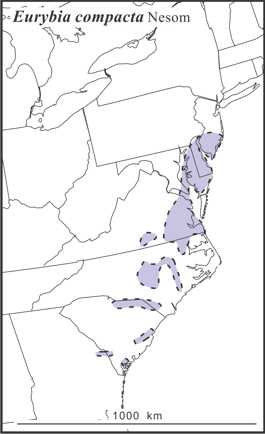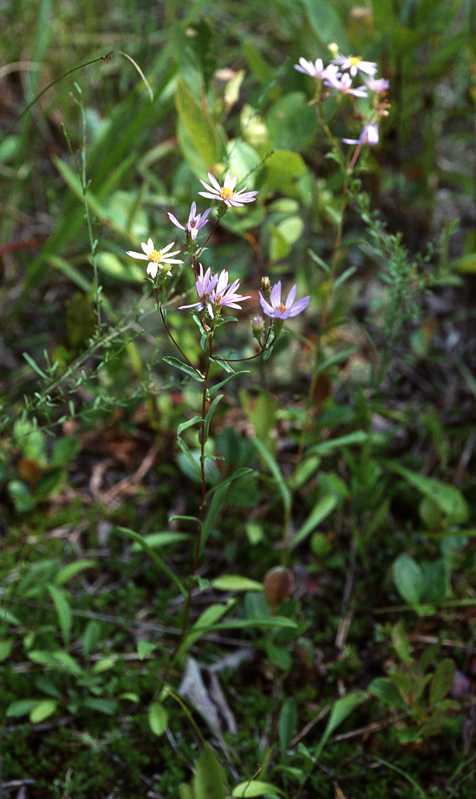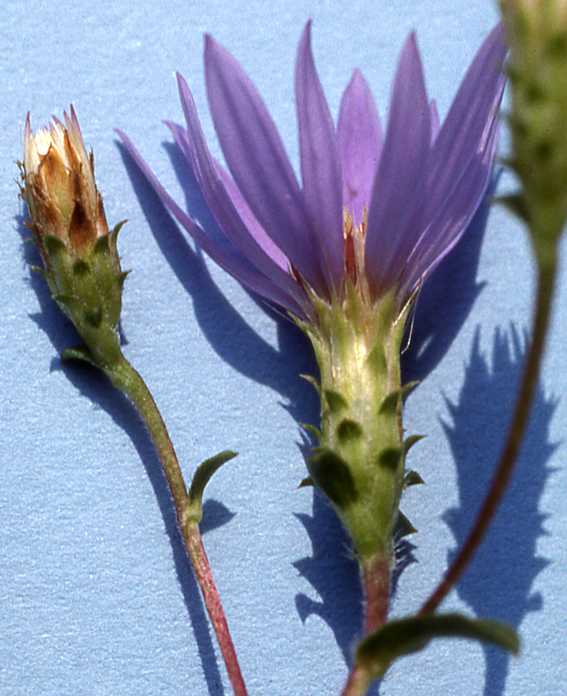Slender aster

Eurybia compacta G.L. Nesom is native to dry, sandy places, dry to moist pinelands, oak-thickets, bogs, barrens of the coastal plain and outer Piedmont from New Jersey to southern South Carolina and adjacent Georgia (Brouillet 2006 FNA). The species is distinguished from close relatives by its thick, woody, ovoid to spheric rootstocks, ± densely villous stem distally, leaves with only midnerves conspicuous, entire or slightly serrate stem leaf margins (teeth and apices indurate), and heads with 24–35 phyllaries, (5–)8–14 blue-violet to rose-purple or bluish, often pale, ray florets, and 10-20 disc florets. The species is diploid (2n=18).
Eurybia compacta is rare or extirpated from much of its original range (Georgia, Maryland, South Carolina, Virginia) and is of conservation concern. Cronquist (1980) stated that the species (under the name Aster gracilis) was similar to E. surculosa (sect. Calliastrum) and E. avita and E. paludosa (sect. Heleastrum) highlighting the lack of well defined species grouping in much of the genus (Selliah and Brouillet 2008).
1-4. Eurybia compacta, Semple & Suripto 9512, Burlington Co., New Jersey. 1. Small shoots. 2. Cormoid rootstocks. 3. Inflorescences, 4. Involucre and rays.
Last updated 30 March 2025 by J.C. Semple
© 2025 J.C. Semple, including all photographs unless otherwise indicated







